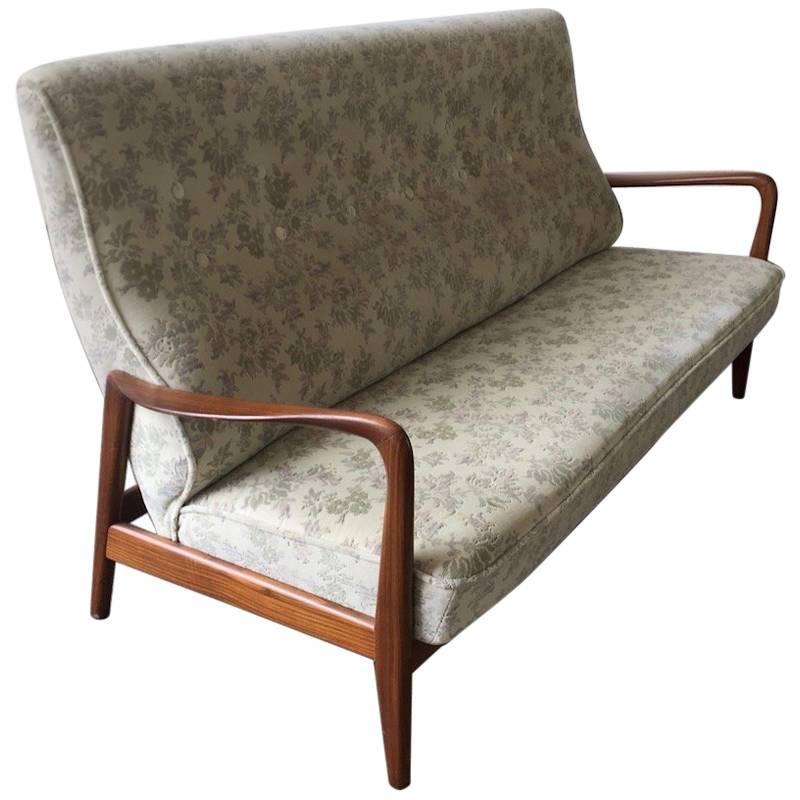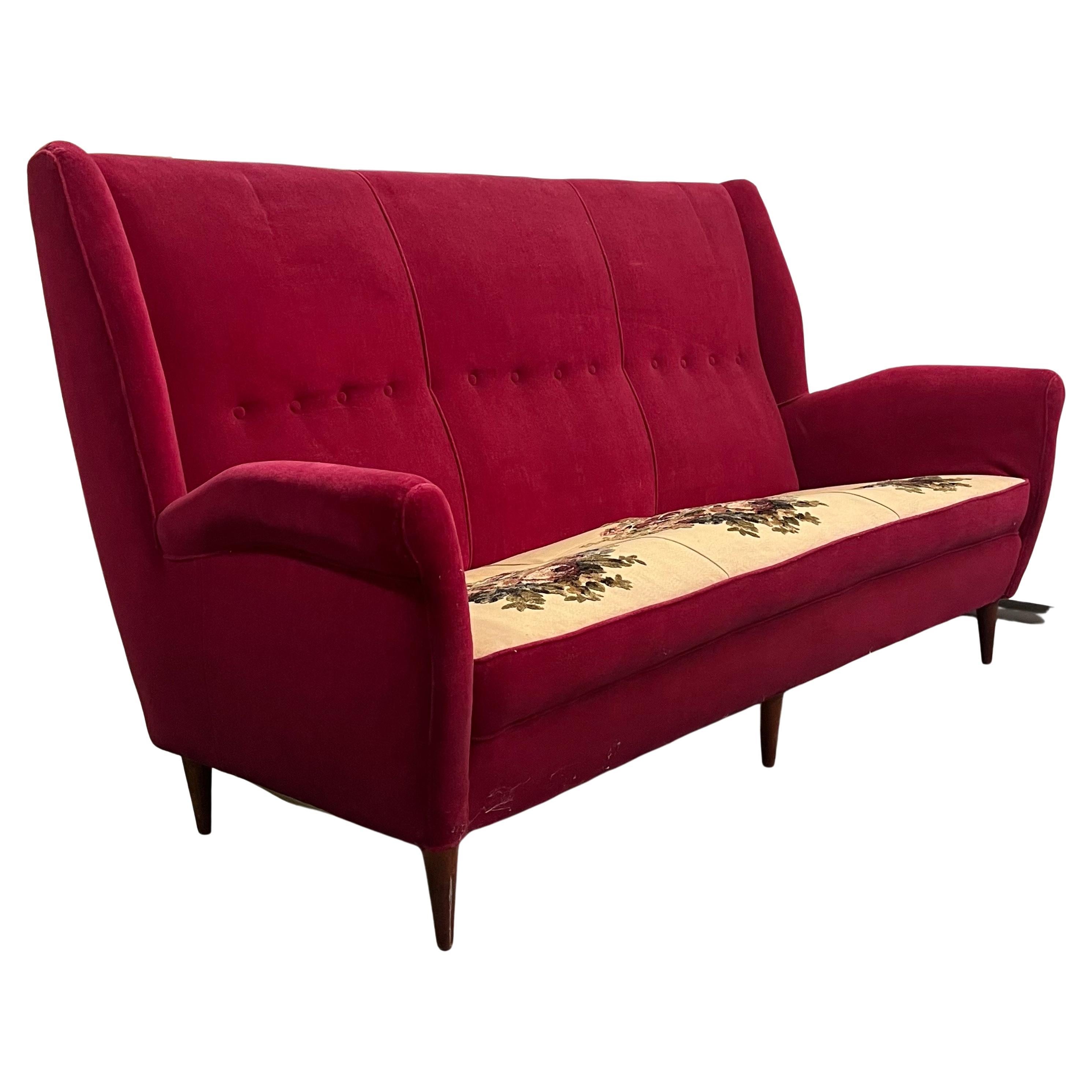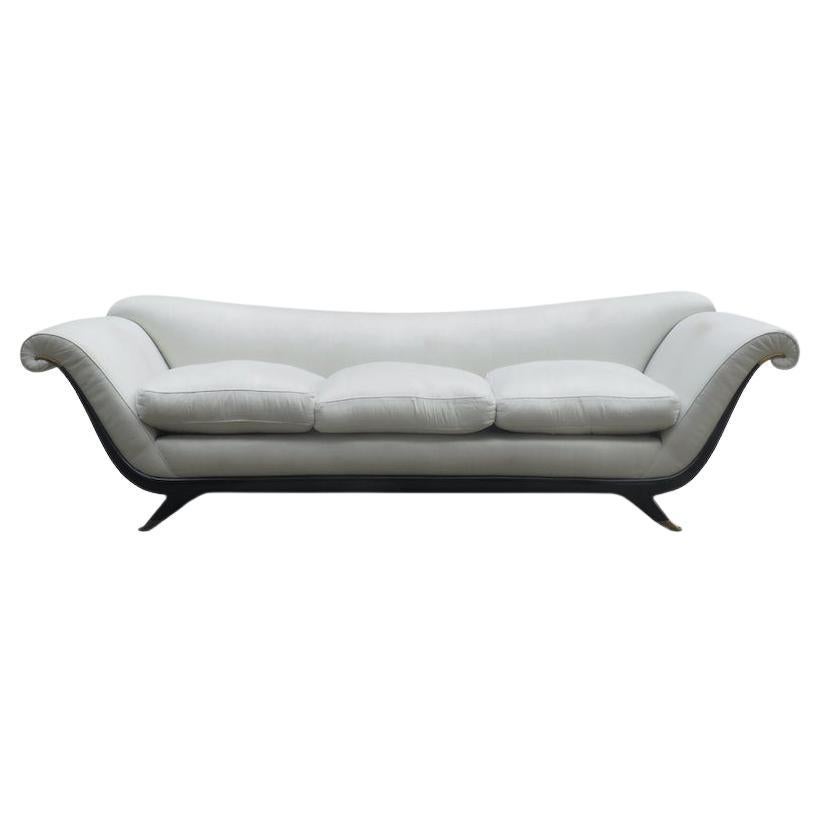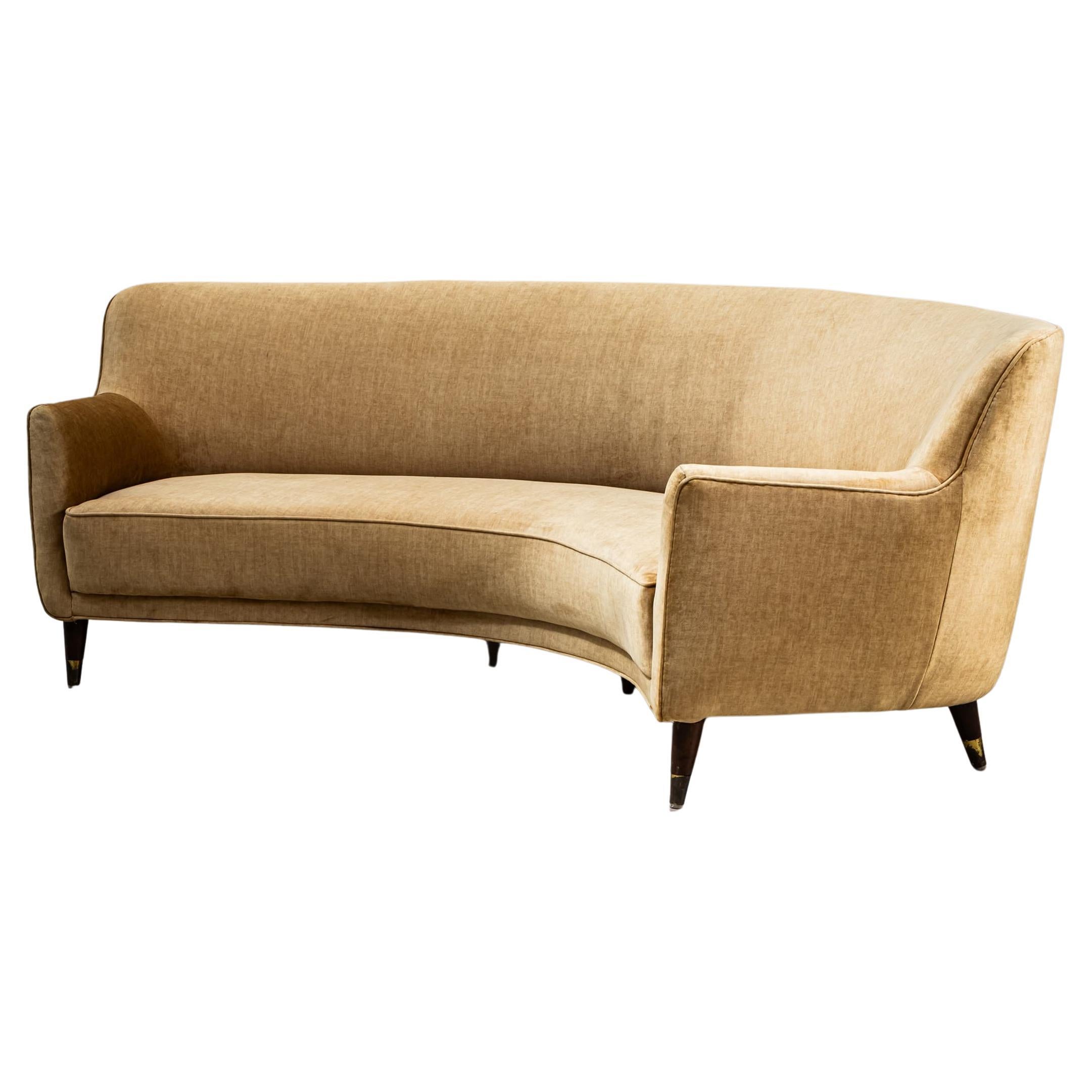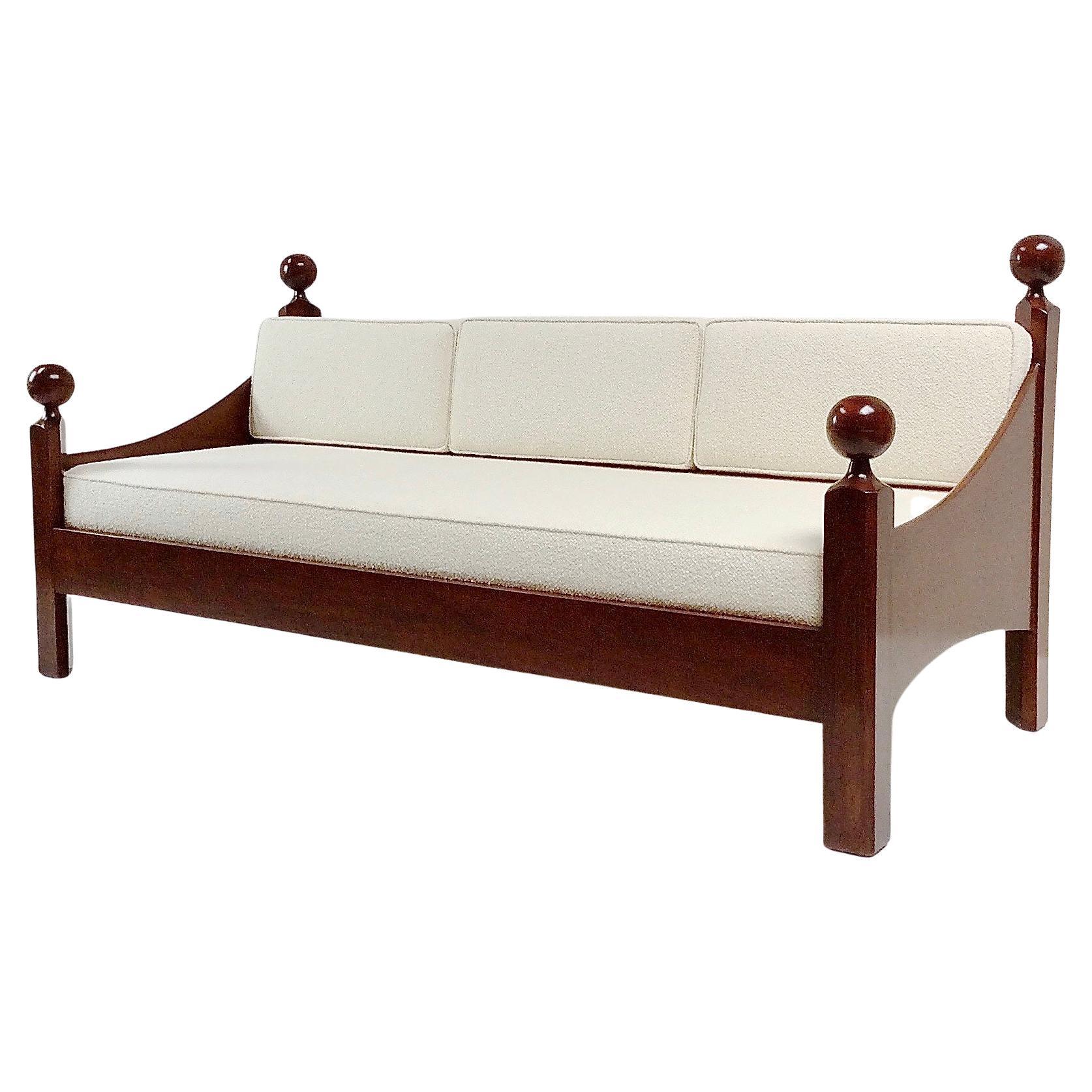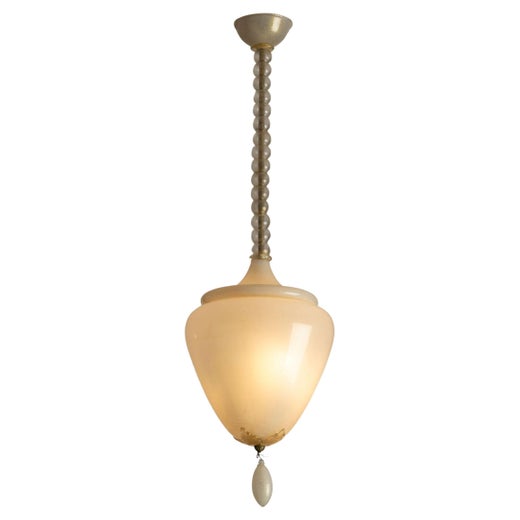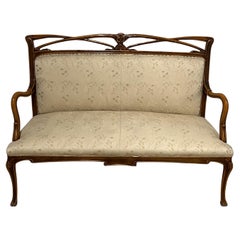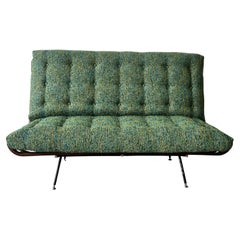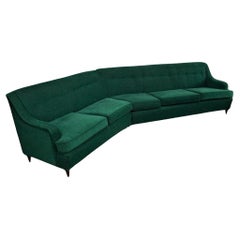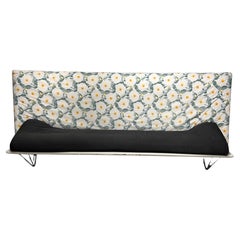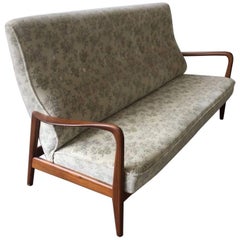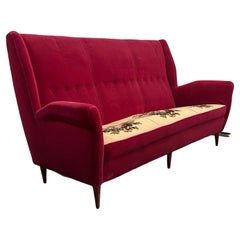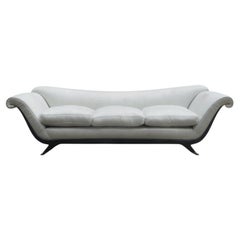Gio Ponti Tomaso Buzzi Sofa
About the Item
- Creator:Gio Ponti (Designer),Tomaso Buzzi (Designer)
- Dimensions:Height: 35.44 in (90 cm)Width: 70.87 in (180 cm)Depth: 27.56 in (70 cm)Seat Height: 18.01 in (45.72 cm)
- Materials and Techniques:
- Period:
- Date of Manufacture:1930s
- Condition:
- Seller Location:Red Lion, PA
- Reference Number:1stDibs: LU9785240007292
Gio Ponti
An architect, furniture and industrial designer and editor, Gio Ponti was arguably the most influential figure in 20th-century Italian modernism.
Ponti designed thousands of furnishings and products — from cabinets, mirrors and chairs to ceramics and coffeemakers — and his buildings, including the brawny Pirelli Tower (1956) in his native Milan, and the castle-like Denver Art Museum (1971), were erected in 14 countries. Through Domus, the magazine he founded in 1928, Ponti brought attention to virtually every significant movement and creator in the spheres of modern art and design.
The questing intelligence Ponti brought to Domus is reflected in his work: as protean as he was prolific, Ponti’s style can’t be pegged to a specific genre.
In the 1920s, as artistic director for the Tuscan porcelain maker Richard Ginori, he fused old and new; his ceramic forms were modern, but decorated with motifs from Roman antiquity. In pre-war Italy, modernist design was encouraged, and after the conflict, Ponti — along with designers such as Carlo Mollino, Franco Albini, Marco Zanuso — found a receptive audience for their novel, idiosyncratic work. Ponti’s typical furniture forms from the period, such as the wedge-shaped Distex chair, are simple, gently angular, and colorful; equally elegant and functional. In the 1960s and ’70s, Ponti’s style evolved again as he explored biomorphic shapes, and embraced the expressive, experimental designs of Ettore Sottsass Jr., Joe Colombo and others.
Ponti's signature furniture piece — the one by which he is represented in the collections of the Museum of Modern Art in New York, Germany’s Vitra Design Museum and elsewhere — is the sleek Superleggera chair, produced by Cassina starting in 1957. (The name translates as “superlightweight” — advertisements featured a model lifting it with one finger.)
Ponti had a playful side, best shown in a collaboration he began in the late 1940s with the graphic artist Piero Fornasetti. Ponti furnishings were decorated with bright finishes and Fornasetti's whimsical lithographic transfer prints of things such as butterflies, birds or flowers; the Montreal Museum of Fine Arts possesses a 1950 secretary from their Architetturra series, which feature case pieces covered in images of building interiors and facades. The grandest project Ponti and Fornasetti undertook, however, lies on the floor of the Atlantic Ocean: the interiors of the luxury liner Andrea Doria, which sank in 1956.
Widely praised retrospectives at the Queens Museum of Art in 2001 and at the Design Museum London in 2002 sparked a renewed interest in Ponti among modern design aficionados. (Marco Romanelli’s monograph, which was written for the London show, offers a fine overview of Ponti’s work.) Today, a wide array of Ponti’s designs are snapped up by savvy collectors who want to give their homes a touch of Italian panache and effortless chic.
Find a range of vintage Gio Ponti desks, dining chairs, coffee tables and other furniture on 1stDibs.
Tomaso Buzzi
Architect, urban planner, glass, furniture and landscape designer, and interior decorator — Tomaso Buzzi was a 20th-century renaissance man. Buzzi, along with his frequent collaborator Gio Ponti, led Italy’s Novecento Milanese movement of the 1920s and ‘30s — an approximate equivalent to France’s Art Deco movement. While Buzzi is prized for chairs, tables and other furnishings that modernized the majestic lines of 18th-century designs, he is best known for the remarkable, jewel-toned glassware he produced in a two-year stint as the artistic director of the Venini glassworks on the Venetian island of Murano.
Buzzi was born in 1900 in the town of Sondrio in the Lombardy region of northern Italy. He studied at the Milan Polytechnic, and soon after he graduated joined a lively Milanese decorative arts scene. In 1927, he and Ponti joined fellow designers Paolo Venini and Michele Marelli to form a design collaborative called Il Labirinto (the Labyrinth), Italy’s answer to the Wiener Werkstätte. In 1932, when Venini's glass company lost the design services of the sculptor Napoleone Martinuzzi, who left to start his own factory, he turned to Buzzi. The young architect’s careful study of lighting design and a love for experimentation yielded major innovations in Murano glass fixtures. The forms of his wares were inspired by sources from antiquity as diverse as Persian urns and animal-shaped Etruscan jugs. Buzzi developed a complex glass-layering method that produced deep, glowing pastel colors that ran from pink to peach, to sea-green and slate blue.
Buzzi furniture has a noteworthy elegance and nobility. Delicate chairs with arrow-shaped backs and elaborate burled wood armoires are typical of his aesthetic, and would add a sophisticated note to any room, modern or traditional. And an exemplary piece of Buzzi’s vibrant, lustrous glassware would merit a place of honor in every design collection.
- ShippingRetrieving quote...Shipping from: Red Lion, PA
- Return Policy
More From This Seller
View AllVintage 1930s Art Deco Sofas
Fabric, Wood
Mid-20th Century Sofas
Metal
Vintage 1950s Mid-Century Modern Sectional Sofas
Fabric, Wood
Vintage 1980s Sofas
Metal
Vintage 1950s Lounge Chairs
Brass
Vintage 1950s Lounge Chairs
Steel
You May Also Like
Vintage 1940s Italian Art Deco Sofas
Upholstery
Vintage 1950s Italian Mid-Century Modern Sofas
Wood
Mid-20th Century Italian Mid-Century Modern Sofas
Mohair, Upholstery, Hardwood
Vintage 1940s Italian Art Deco Sofas
Wood
Mid-20th Century Italian Sofas
Brass
Vintage 1960s Italian Mid-Century Modern Sofas
Metal
Read More
Billy Cotton Layers His Interiors with Lived-In Comfort
The Brooklyn-based designer is adept at styles ranging from austere to over-the-top, espousing an architectural, detail-oriented approach also evident in his line of furniture and lighting.
Italian Design Legend Giò Ponti Makes a Splash in Paris
A blockbuster exhibition at the Musée des Arts Décoratifs shows the work of the modernist master in a brilliant new light.

